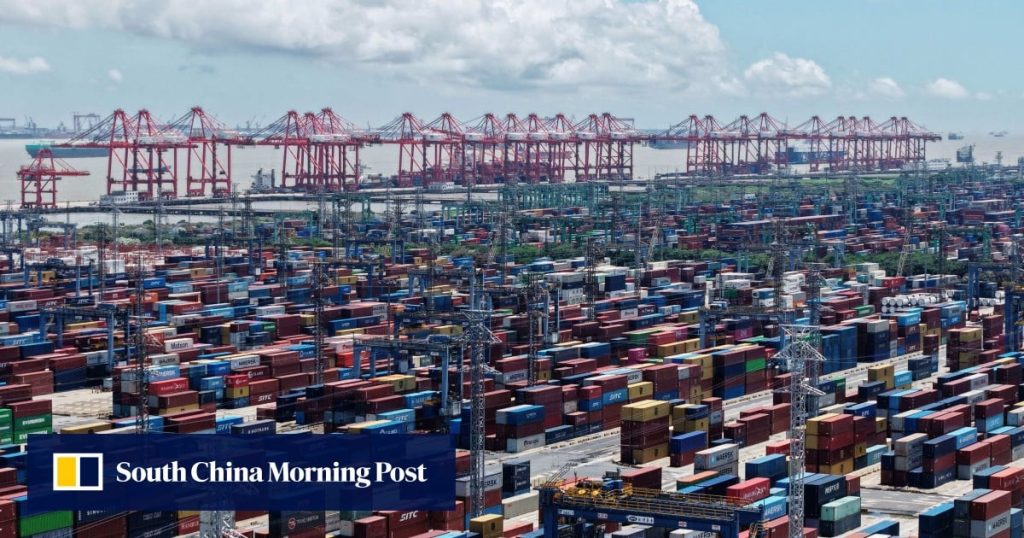Even after securing another 90-day tariff truce with the US, China’s trade-diversification efforts are expected to continue reshaping shipping routes for the rest of the year, as transpacific routes remain under pressure following an initial front-loading phase.
“Despite ongoing negotiations between the two countries, we believe it is unlikely that tariffs will be completely eliminated, which will continue to weigh on US import volumes,” said Jarl Milford, a maritime analyst at Veson Nautical.
“We expect a full-year decline in volumes on this trade lane, which will apply further pressure on freight rates,” he told the Post.
The Shanghai Containerised Freight Index, which is updated every Friday and tracks spot freight rates for containerised cargo, specifically from Shanghai to major global destinations, has declined for nine consecutive weeks.
The latest rates from Shanghai to the US west coast and east coast have fallen by more than half from their peak in early June, when exporters rushed to front-load their products after the initial three-month tariff pause began.
Danish shipping giant Maersk also mentioned the significant impact on its container-liner services in its second-quarter earnings report, noting that its China-US box volumes during the April-June period declined by around 35 per cent, year on year.
However, it pointed out that the contraction in North American imports was more than offset by the strong import growth into Europe, Latin America, Africa, western Asia and Central Asia.


